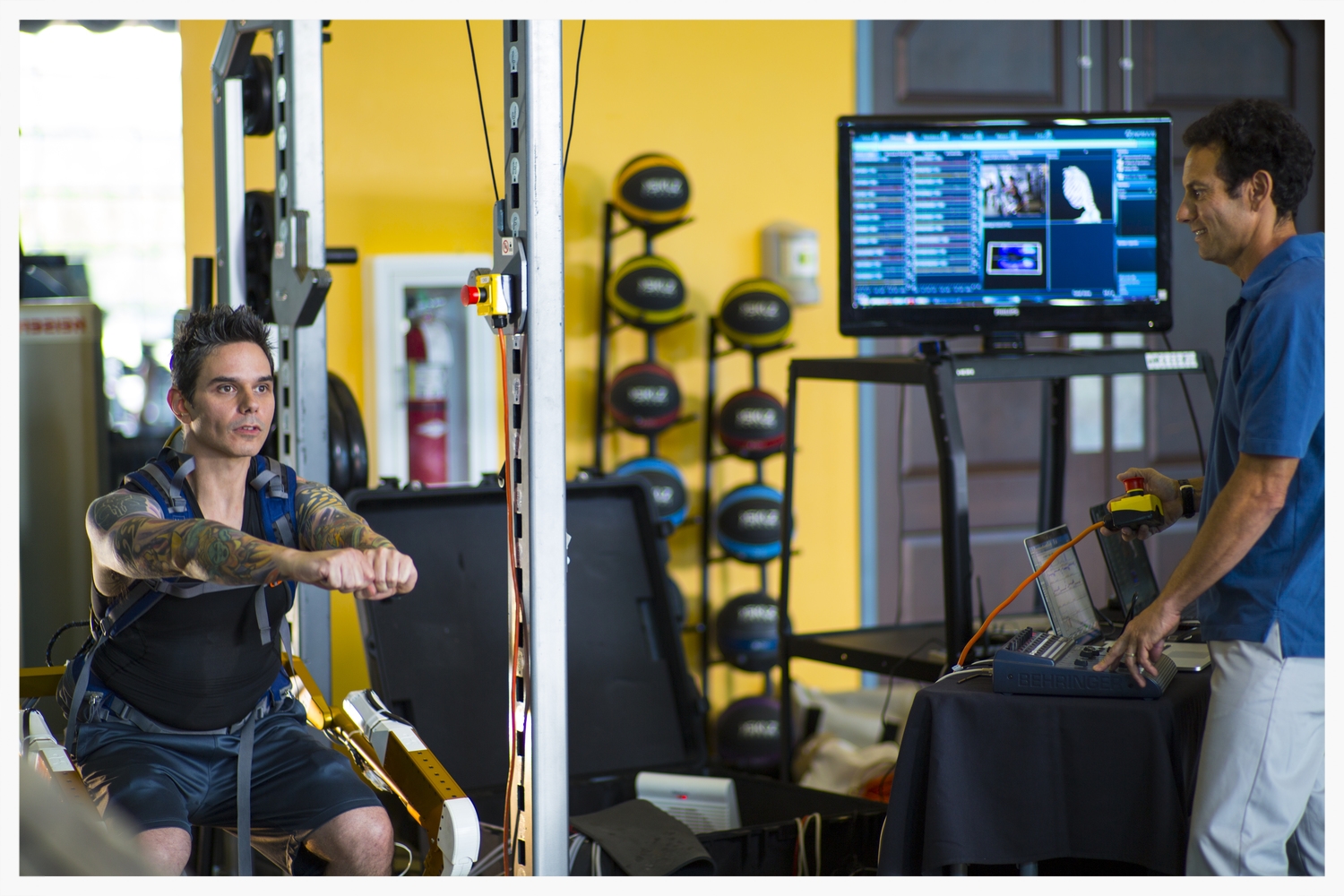The Grasshopper Exercise Device
The Grasshopper, or the Hopper for short, is a wearable robotic device to address muscle and bone density loss for astronauts spending extended periods of time in zero-gravity. It was developed through a NASA funded project to investigate robotic exoskeleton devices. The Grasshopper connects to the user's torso like a hiking backpack, over the shoulders and around the waist. At the feet are footplates that the user is strapped to. There are two actuators, one at each "knee" joint, which are capable of high fidelity torque control. Because the Hopper uses motors instead of gravity to create the load on the user, the device is suited for use on space missions. Exercise in zero-gravity conditions is critical to maintain muscle strength and bone mass.
In operation, the actuators try to fold up, or collapse, putting a compressive load between the user's feet and torso. This force is similar to carrying a heavy backpack. The user then bends and extends his or her knees, replicating a weightlifting squat exercise. The applied load is precisely controller by a computer, and can be programmed to simulate gravitation loads or any desired load prescription, such as free-weight squat exercise. It is even possible to perform eccentric muscle exercises, or negatives, without the need for a spotter. Because the hip joints, as well as the spine and long leg bones, are in the applied load path, there is the potential to stimulate bone growth, countering the typical bone loss when astronauts return from extended duration space travel.
The Team:
Peter Neuhaus, Lead
Travis Craig
Nick Payton
Jeremy Gines
Chris Jumonville
Jerryll Noorden
7-17-17 Update
The Grasshopper has been upgraded mechanically and electrically. The motor controllers are now integrated into the actuators and the electronics all reside under the base plate. The interface with the user has been changed to a traditional bar.
11-18-14 update:
The Grasshopper appeared on Discovery's Daily Planet on Nov 13, 2014.
9/26/14 update:
An upcoming segment of The Discovery Channel’s Daily Planet program will feature the Hopper. To test its exercise capabilities, the Hopper was brought to EXOS, a leader in integrated performance training, nutrition and physical therapy for professional and elite athletes, the military, and innovative corporations. EXOS has a center in Gulf Breeze, Fla., near IHMC.
Noraxon, a company specializing in evidence-based biomechanics, provided sensors and technical analysis to compare exercise using the Hopper versus use of free weights.
The Daily Planet segment was filmed at IHMC and the EXOS center. The show’s host, Lucas Cochran, was instrumented with the Noraxon sensors and coached an EXOS specialist on how to properly perform the squat motion both with free weights and while strapped into the Hopper. The data showed that his muscles and heart responded in very similar fashion while using either the Hopper or the free weights. In addition, Lucas reported that the Hopper was more comfortable than free weights for a similar weight.
About EXOS
EXOS is pioneering human performance. Founded in 1999 to maximize the potential of athletes, EXOS (formerly named Athletes’ Performance) has grown to become a leader in proactive health and performance, trusted by elite athletes, the military, and innovative companies worldwide. EXOS designs and delivers health and performance game plans that guide people to achieve higher levels of success. With world-class partners, facilities, technologies, and specialists spanning six continents, EXOS is progressing the intelligence behind human performance wherever necessary. To learn more, visit www.TeamEXOS.com.
About Noraxon
Noraxon is a U.S. based, international leader in manufacturing and distribution of research grade applications for measurement devices and software. Products include EMG, gait analysis, biofeedback and 2D/3D motion analysis. Noraxon’s integrated reporting and single interface enable a whole body approach to real-time biomechanics measurement for clinical and research applications. For information on the Noraxon tools and metric possibilities, contact Sally Crawford, Director of Biomechanics at Noraxon: sally.crawford@noraxon.com.











